Below is the crux of the climb. A steep gully – like a fissure of weakness in Eagle Crag’s rocky defences – unveils a secret line of ascent, a hidden corridor offering hikers safe passage up this otherwise impenetrable crest.
Ahead, a solitary rowan tree juts out of a cliff-face, drooping into the skyline at the top of the gully, a beacon heralding the location of this difficult-to-find route. On each side, grey walls of rock enclose the gully, but in-between is a verdant pavement of vegetation – a soft, kindly, green carpet of moss, grass and bracken guiding me upwards into the Lake District skies.
'Heavenly' is how famed Lakeland guidebook author Alfred Wainwright often described Borrowdale and, in solidarity with the old curmudgeon, I too sense the touch of divinity in this beguiling scenery.
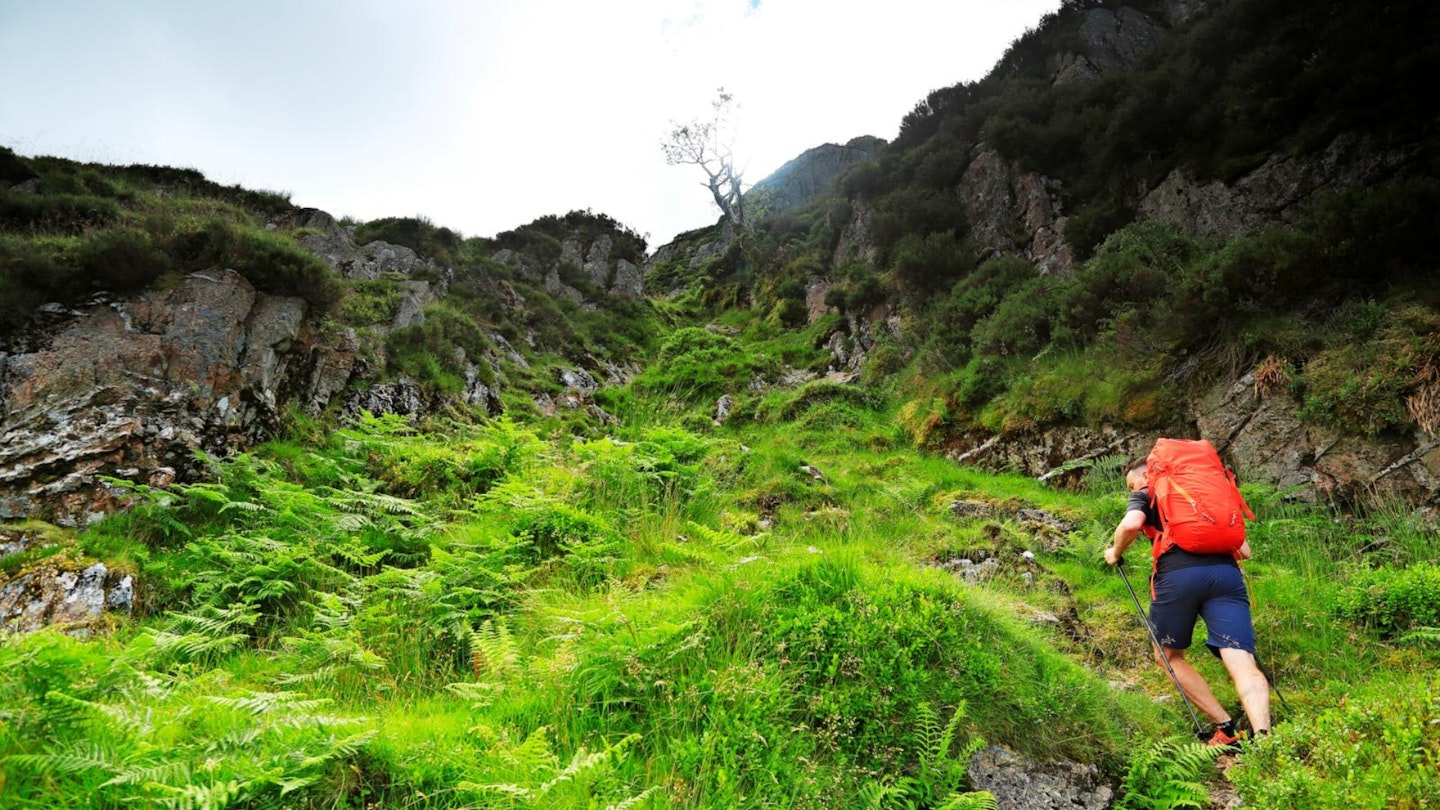
I top out of the gully and pause to catch my breath. Sweat beads down my cheek and forehead. It is roasting hot, with rolling fluffy cumulus providing scant respite from the searing sunshine. The sky is a brilliant blue and Borrowdale’s fields sparkle a green so vibrant it looks unreal.
Lakeland – so often muted and dulled – is on fire with colour, enlivened by the rare spotlight of a glorious British summer’s day. The sense of energy and colour is only amplified by the bounty of fruit around me. A thousand bilberry bushes are in bloom, bursting into life with a bumper crop of plump, bluey/purple berries.
I feast on the sweet, juicy harvest and can’t hide a smile. If this really is a stairway to heaven, then my lips taste Manna from the mountain gods.
Back to the start
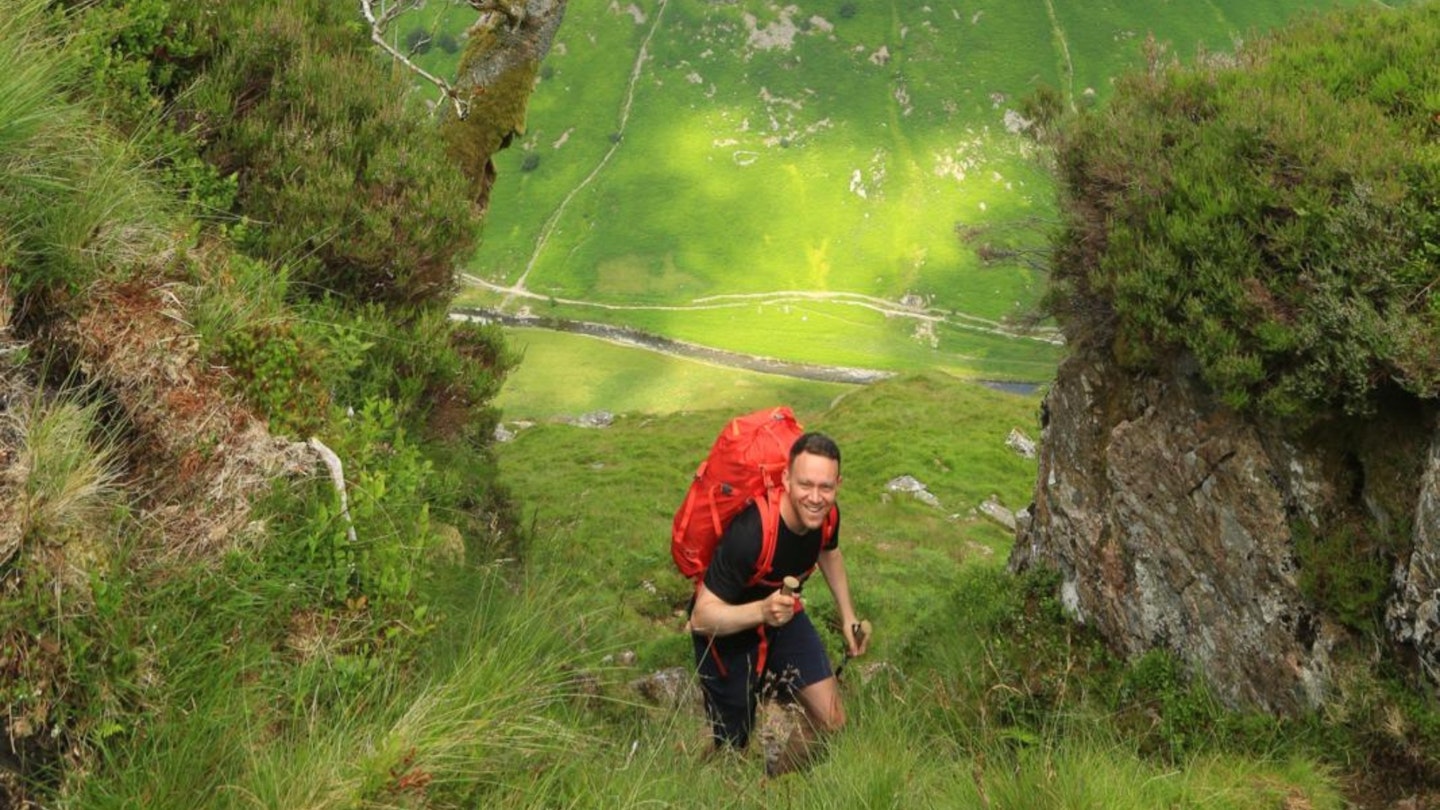
Rewind a couple of hours and I park up just to the north-west of Stonethwaite. I lather Factor 50 Ambre Solaire onto my face, throw an orange backpack over my shoulder, and head down the drystone wall-lined lane towards the hamlet.
Eagle Crag is an arresting sight, dominating the skyline above fields of Herdwick sheep and blankets of oak and birch. Gulp. It looks impassable. Is there really a way up that northern ridge? And, if so, will I be able to find it?
I can’t keep my eyes off the fell. Standing proudly at the confluence of side-by-side valleys – Langstrath and Greenup – Eagle Crag is a monumental cornerstone, splitting the landscape in two. It rises like a huge dome, gnarled and tumorous, a chaotic fusion of crag and vegetation.
Stepped in profile, with tiers and terraces of craggy excrescence spoiling any smooth lines, the mountain has a knobbly, coagulated look to it – as if desperate to display a more muscular, gnarly, powerful side to its personality.
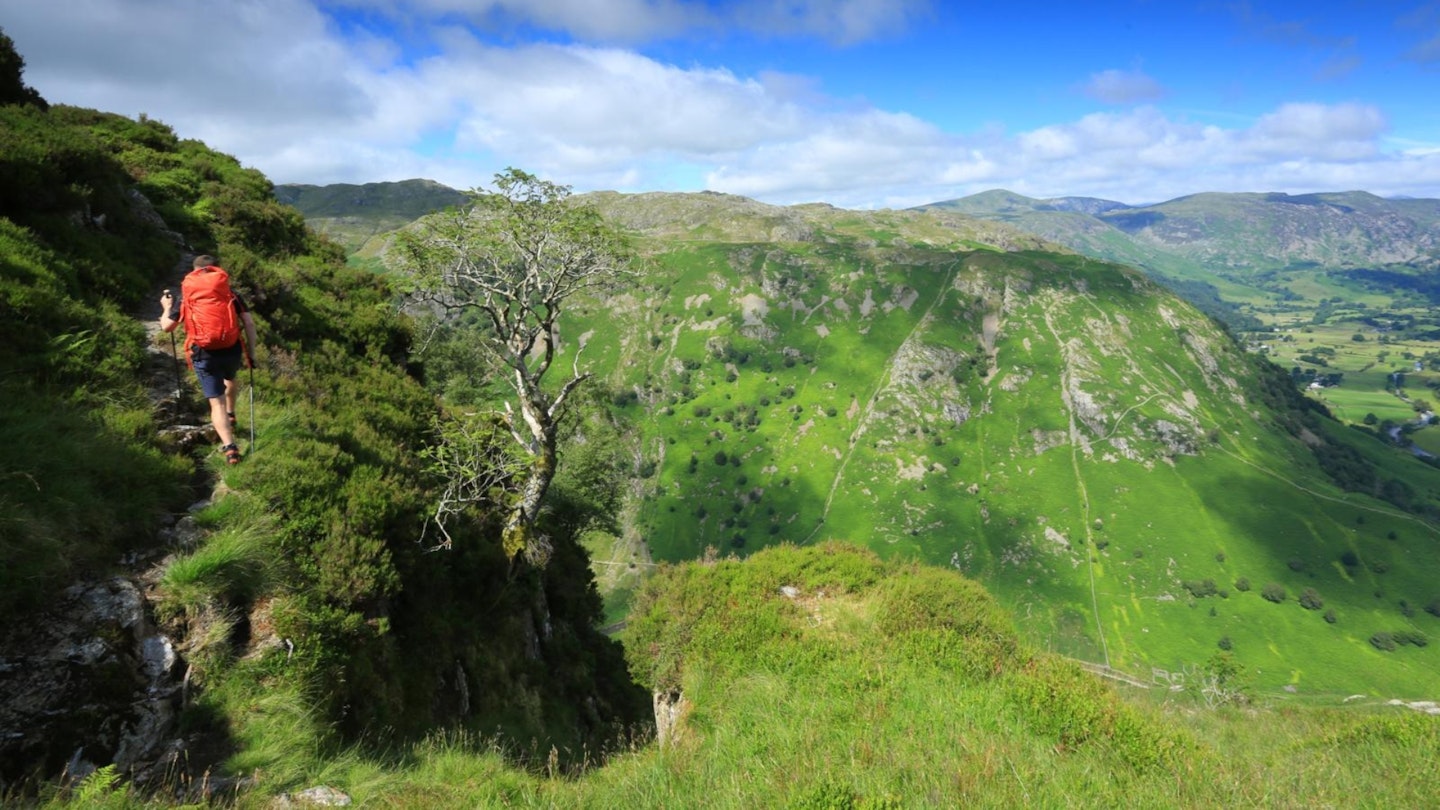
To the left, Eagle Crag – the crag that gives the fell its name – draws the eye. Plunging dramatically from the upper reaches of the fell, it forms a perpendicular notch on the horizon, a cliff-face of terrifying verticality.
Below it, yoked together in perpetuity, Pounsey Crag protrudes eastwards with jagged confidence, while on the opposite side of the mountain Heron Crag watches over Langstrath Valley with a knowing eye.
In-between, it is Bleak How crag – a grey tower emerging out of a sea of thick bracken – that governs the bulk of the northern flanks. And somewhere above it, weaving its way through the labyrinth, lies my route of ascent.
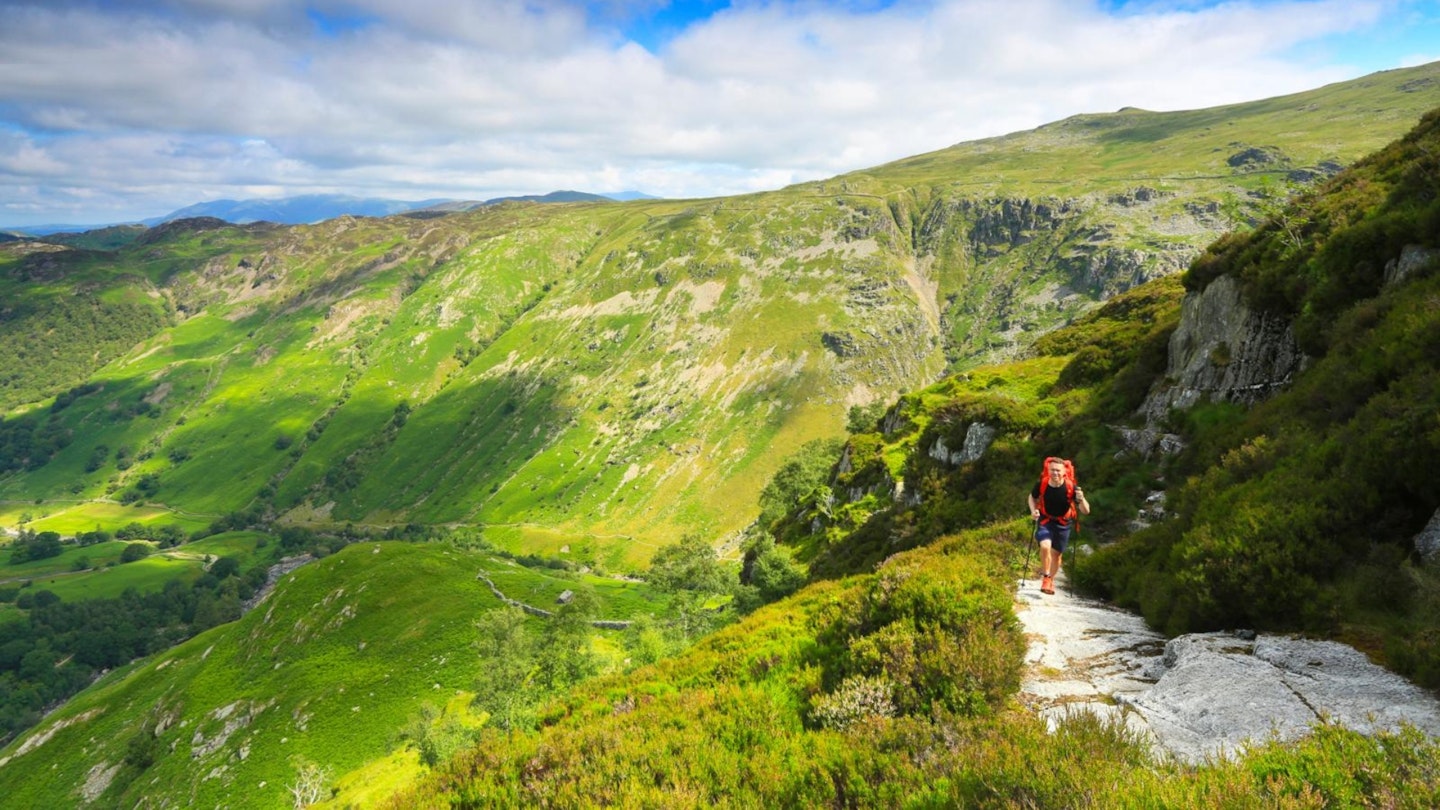
Beyond a short row of idyllic cottages, I turn left next to a red telephone box, cross Stonethwaite Bridge, and follow the Cumbria Way south-east alongside the beck. Even at this early hour, the transparent waters are a tempting prospect for a cool-down, but I press on to Smithymire Island and cross the packhorse bridge over Stonethwaite Beck.
Turning left, I bushwhack my way along a narrow trod through a jungle of flourishing ferns, before reaching a half-derelict drystone wall covered in yellow lichens. Here the real action starts – a stiff climb up a grassy ramp, bearing south-west for the point where another drystone wall abuts against a craggy face.
Beyond a rickety, wobbly wooden stile, I traverse a grassy rake – guided by the faint erosion of fellow hikers’ boots who have ventured this way before me – and arrive at the base of the aforementioned gully.
Mere minutes later, I’m shovelling handfuls of billberries into my mouth, content in the knowledge I’ve safely navigated to the top of the correct gully (the key to unlocking this line of ascent) and not accidentally found myself cragfast on an unassailable rock-face.
A word with Wainwright
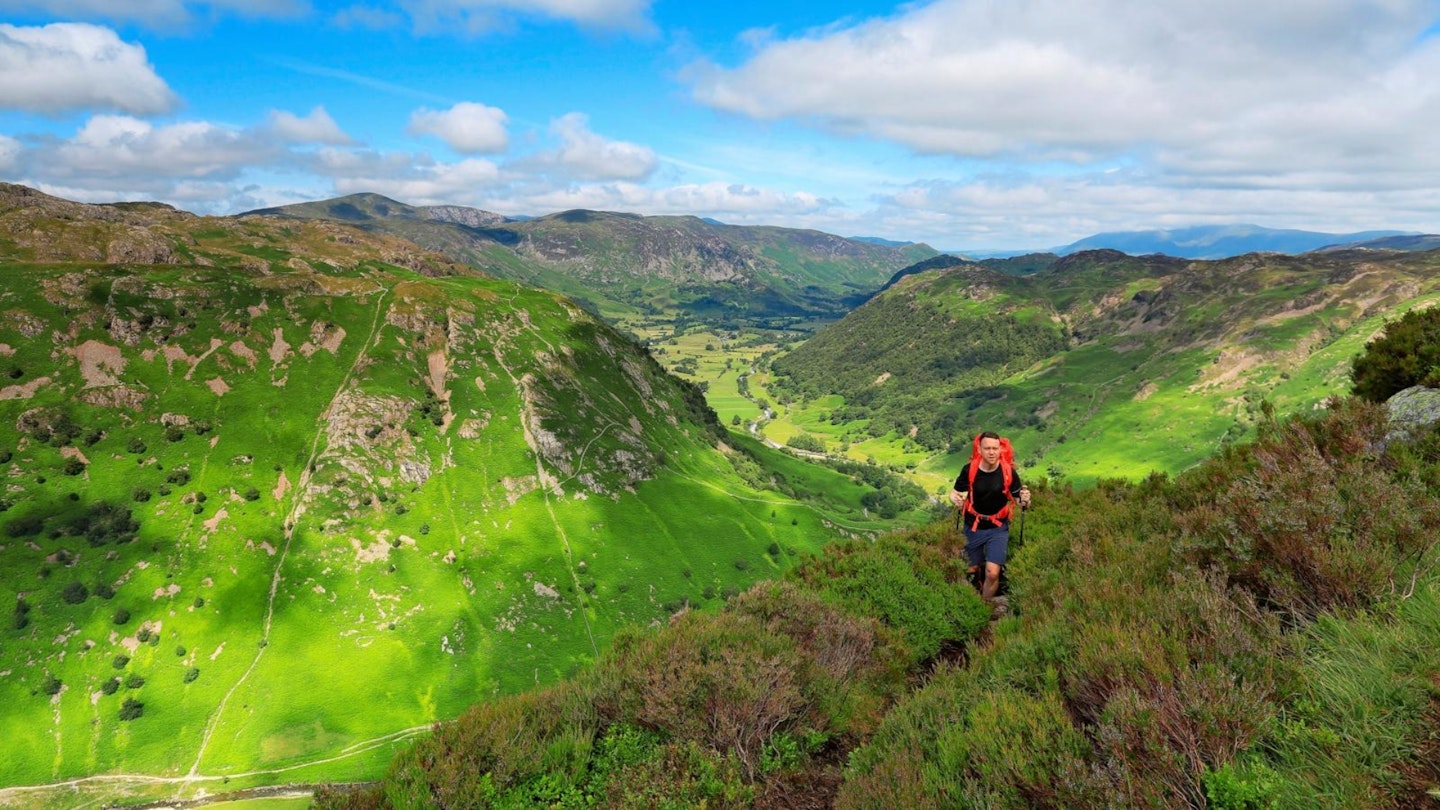
I sit down on a grassy shelf and glance at my copy of Wainwright’s A Pictorial Guide To The Lakeland Fells: The Central Fells, having packed it for the incredibly useful hand-drawn map of this ascent. I read his words on Eagle Crag: “So splendidly situated, so nobly proportioned and of so arresting an appearance that it is, to the eye of the artist and the mountaineer, a far worthier object than the parent fell [High Raise] rising behind... This is a beautiful fell, often admired, seldom ascended.”
Such quietness and isolation, as experienced by Alfred in the late 1950s, are long gone, but Eagle Crag certainly isn’t teeming with hordes of tourists or peakbagging hillwalkers. Bar three intrepid pensioners from the north-east I don’t see another soul on the ascent, and instead I’m able to take a silent moment contemplating which other small Lake District fells surpass the glory of their parental peaks.
Cat Bells is more exciting than Dale Head, Ullock Pike beats Skiddaw hands down, and Rough Crag is infinitely more handsome and shapely than High Street. There must be many more, but as I slip into a sun-drenched state of sleepiness, I can’t think of them.
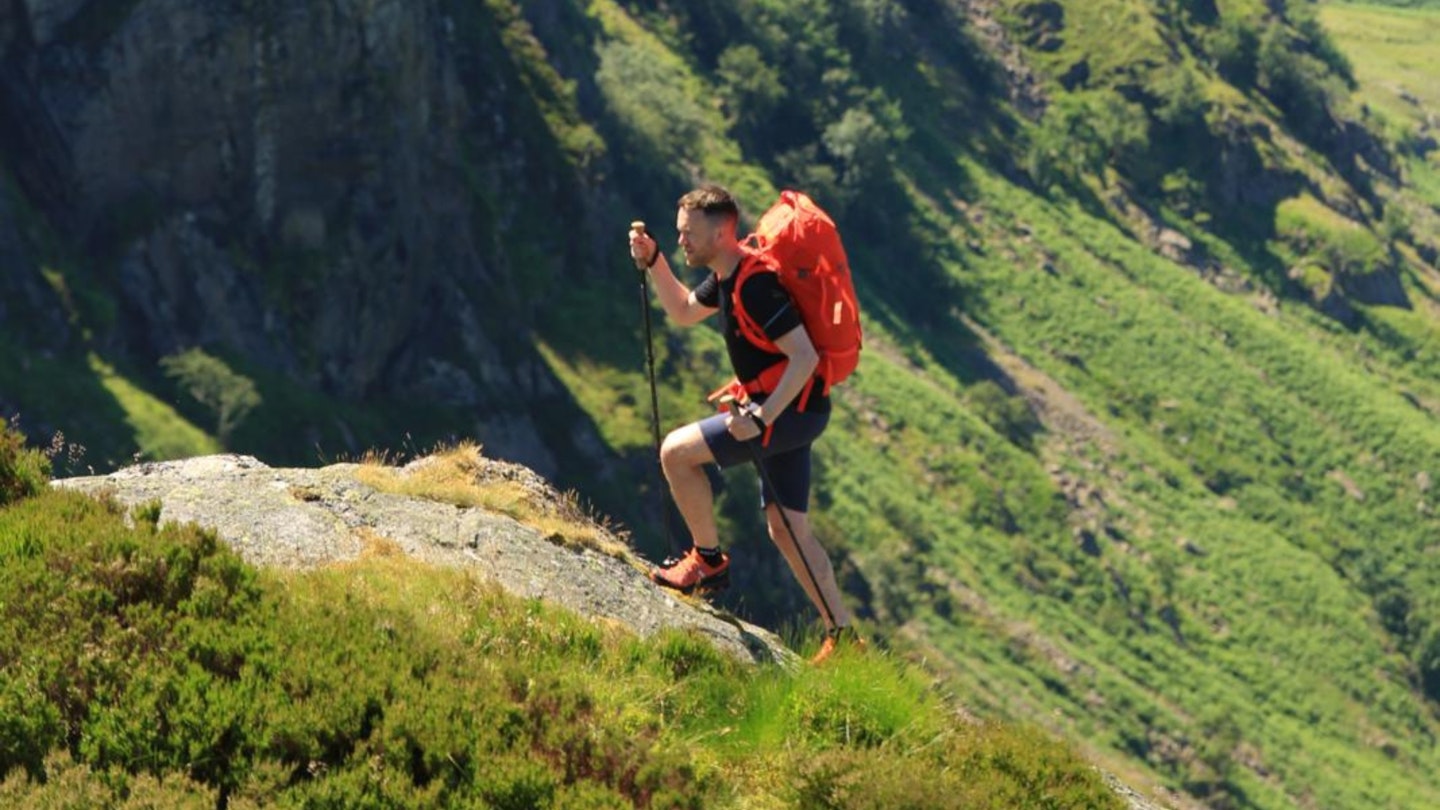
I lie back for a few minutes, basking in the sunshine, and enjoy an elevenses snack or two before deciding to veer east off the main trod for a closer look at Eagle Crag. It is a worthy side-trip. Shattered and sheer, the cliff-face plunges vertically into Greenup Valley, in sharp contrast to the smoother, grassier tones of Ullscarf in the background.
Thick vegetation and pathless terrain guard the crag ferociously from this angle, giving it a closeted and inaccessible aura, like a lost world where the mountainside remains untouched by human interference.
I know that not to be true – fearless climbers head to Eagle Crag for classic E grades, as well as the VS frightener Falconer’s Crack – but in this moment it feels virgin and unexplored.
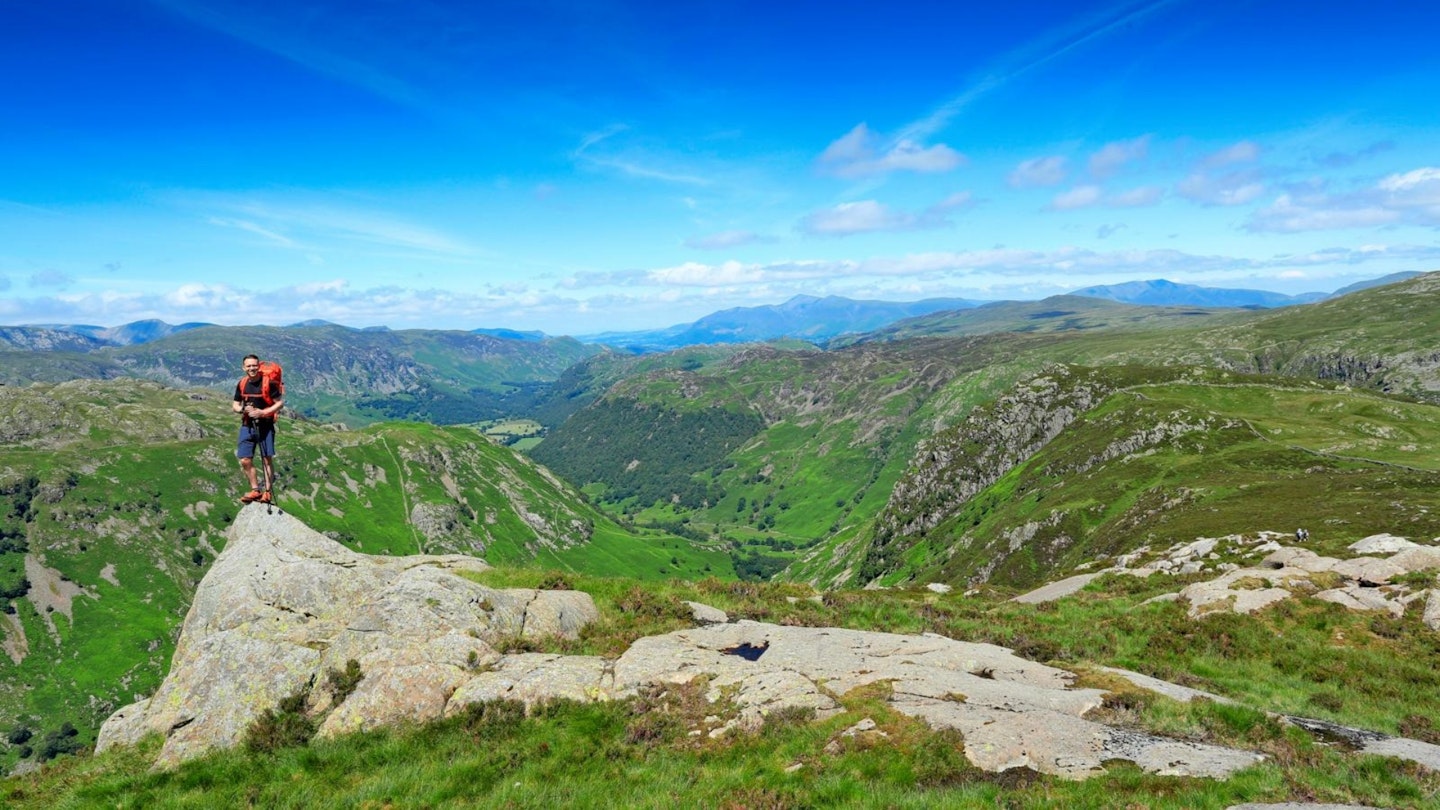
To the summit
Back on the main trod, I skirt atop Heron Crag on a delightful traversing path, now high above the Langstrath Valley. Edged by heather and bilberry, the winding path is easy to follow, passing outcrops of exposed rock banded with gleaming quartz and weaving in and out of lichenous crags.
To my right Rosthwaite Fell is an illumination of emerald, with just a few patches of grey ruggedness – sprawling scree slopes and rough-hewn crags – spoiling the frondescence. Below it, Langstrath Beck snakes through the valley in pleasing curves, stretching away into the distance towards the distinctive pyramidal profile of Bowfell, while on the horizon I mentally tick off Crinkle Crags, Esk Pike, Great End and mighty Scafell Pike.
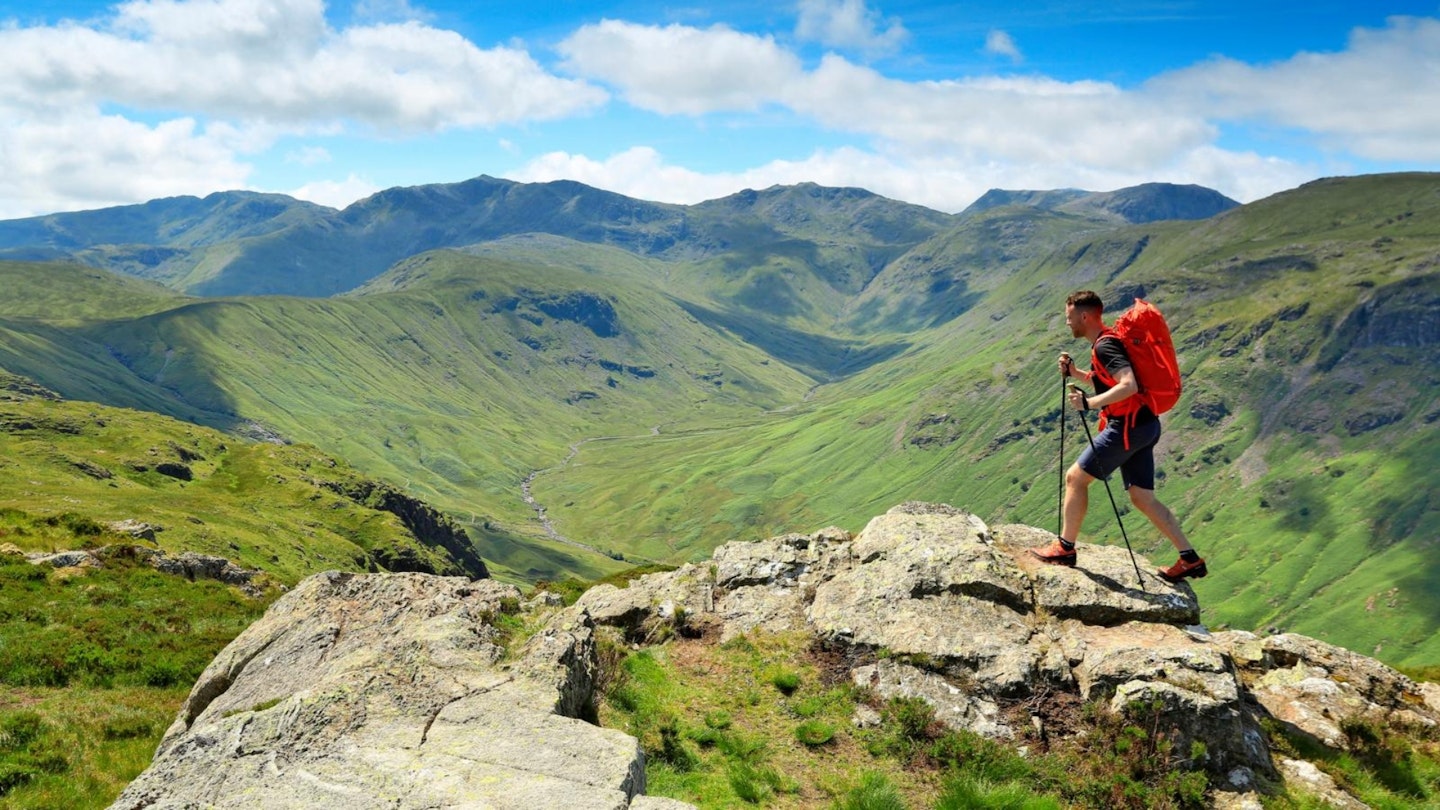
But it is not the distant skyline that captures my imagination. Instead, it is the foreground. The pools of Blackmoss Pot – one of Lakeland’s much-loved wild swimming spots – shimmer like an oasis far below me, and to their right the silvery spine of Cam Crag ridge sweeps upwards in a shapely arch.
At its base is a jumbled pile of humongous boulders, at its zenith rounded grassy slopes, and in the middle an apex of craggy grandeur known for its first-rate scrambling.
I turn left, negotiating a few awkward rocky steps, and emerge at Eagle Crag’s summit plateau. I gaze over the remainder of the day’s walk – an ascent of Sergeant’s Crag (the second Wainwright of the day), a pathless loop into the boggy bowl below Lining Crag, and a final descent alongside Greenup Gill back into Stonethwaite – but that can all wait.
Instead I hop over boulders and tiptoe along a slanting rib of rock to the summit of Eagle Crag. Northern ridge completed? Tick.
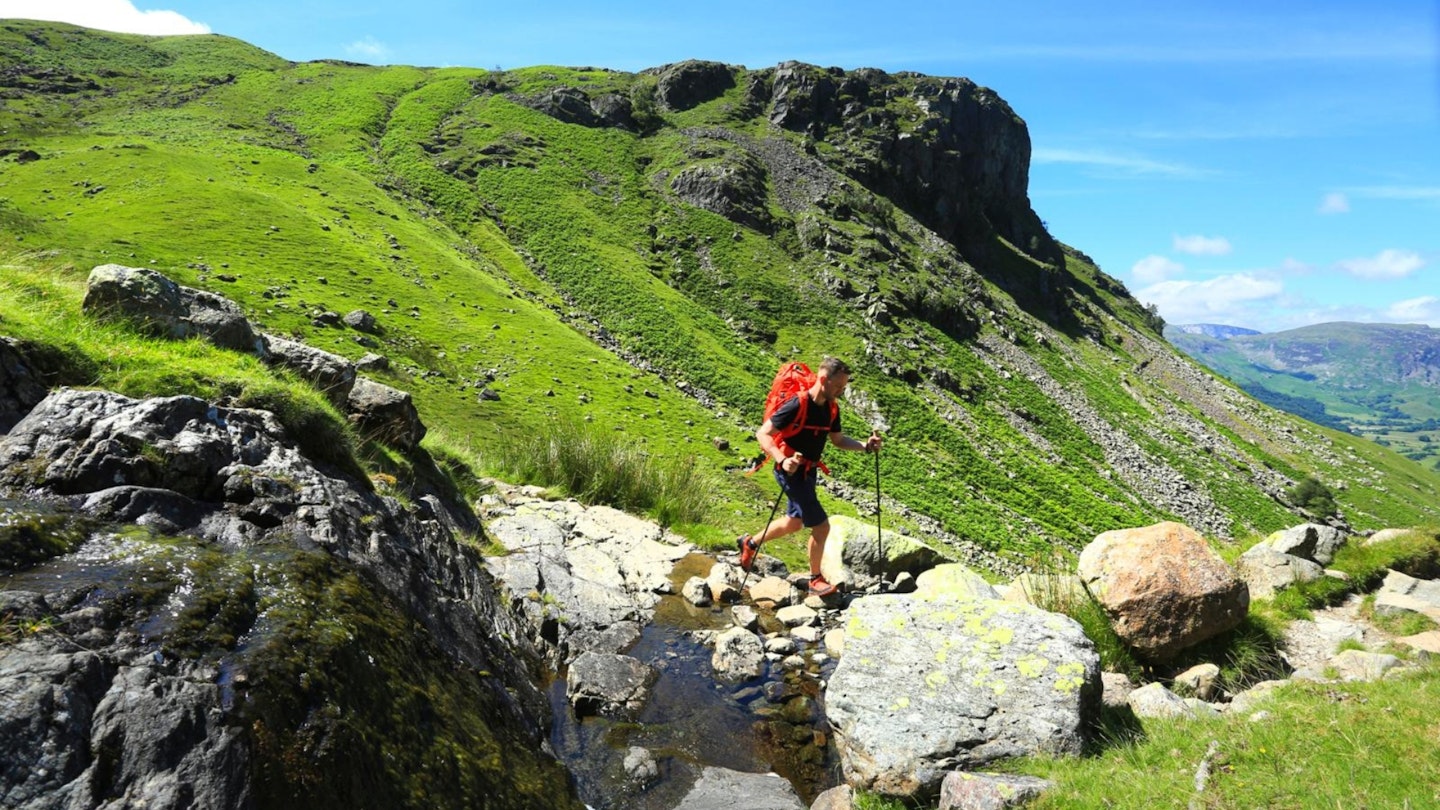
My skin tingles in the unrelenting sunshine, and I can feel myself burning. I reapply sunscreen, gulp down water from my one-litre Nalgene, and devour a decidedly gooey Twix bar.
All is tranquil in this corner of Borrowdale. The gentlest of breezes ruffles my hair, a skylark sings joyously overhead, and the smell of bilberries lingers on my purple-stained fingers.
I watch as cloud shadows dance across the hillsides, painting the mountains in a never-ending kaleidoscope of different shades of green. Eagle Crag might only be 525m tall, but it still reaches up towards the heavens.
About the author
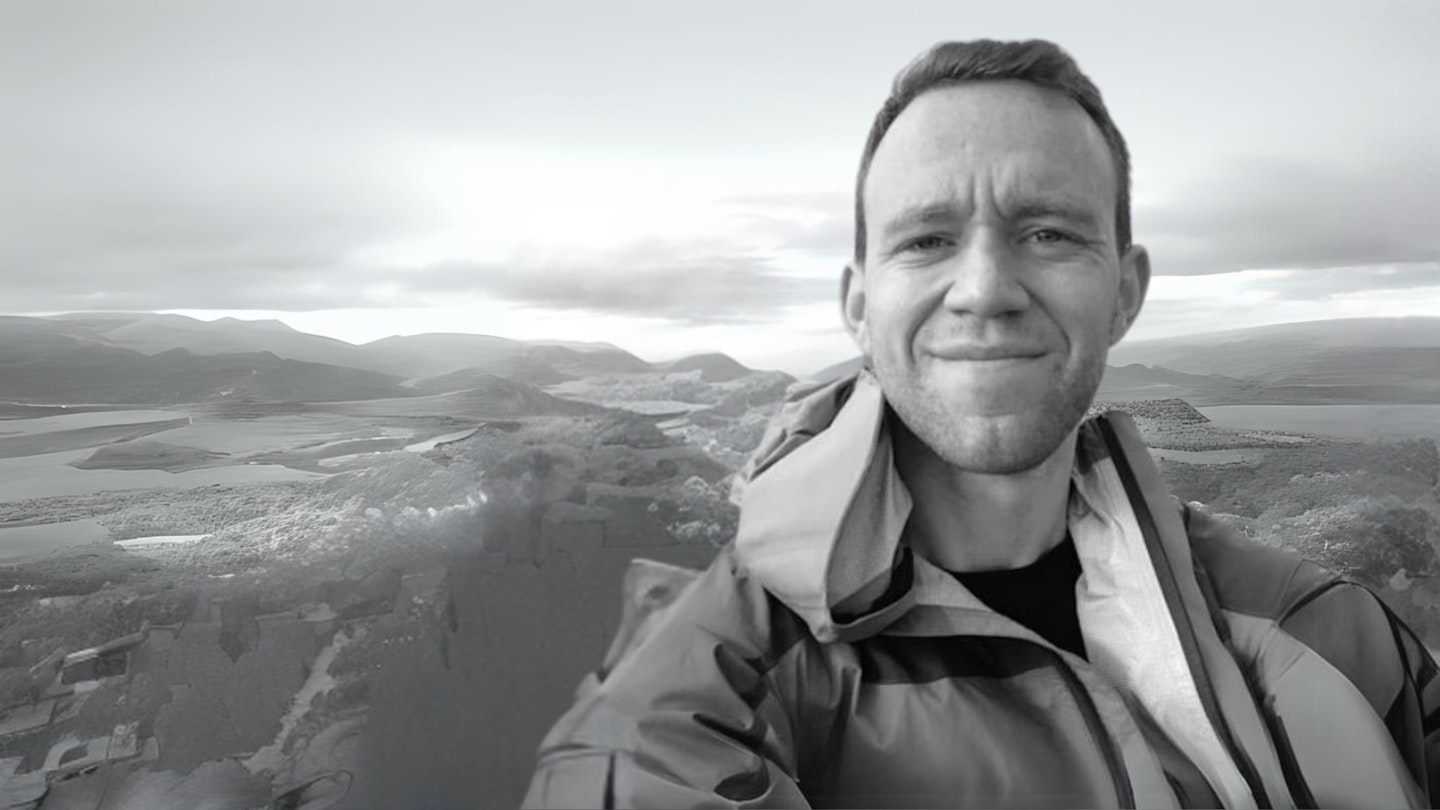
James Forrest is a prolific peak bagger and long-distance walker who’s one of the most high-profile outdoor writers in the UK. He writes regular features and route guides for Trail magazine and has been one of our main gear testers for the last few years.
